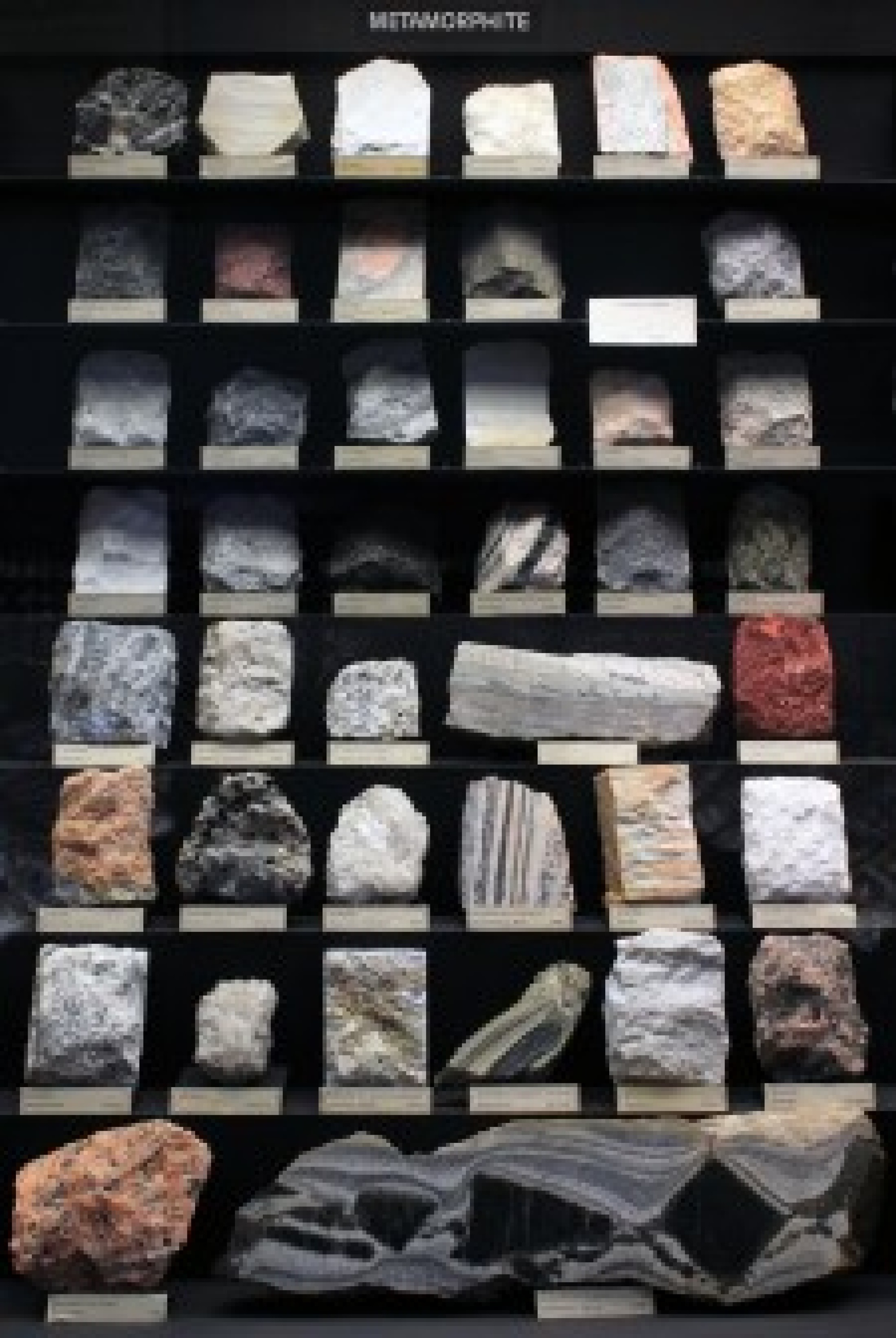The collection serves as a research tool, regularly used by national and international geoscientists, but it also provides
objects for exhibitions, and is used as a reference collection for architects, conservators and masons who need information
about historical rocks, building materials and quarries.
It contains many historical samples (some of them collected during the course of the Austrian Brazilian expedition by Johann Natterer in the early 19th century), and it nowadays mainly grows by incorporating rock specimens collected by members of the Museum
research staff or donated by colleagues and members of the public, thus continuously increasing its scientific value and completeness.
Only a very limited number of the rock samples are displayed to the public, mainly in Hall 4, where they are arranged systematically, essentially representing the major rock types from different occurrences in Austria
and from all over the world. A selection of historic building and decorative stones are presented in Hall 1, and some impactites are displayed in Hall 5 (Meteorite Hall). The main part of this extensive collection is stored in a basement depot.
In order to virtually show more objects of our rock collection to the public and to scientists, a computer database (including
pictures of the objects and scans of the original inventory cards) is being developed, with a focus on the decorative and
building stones and on the impactites.


